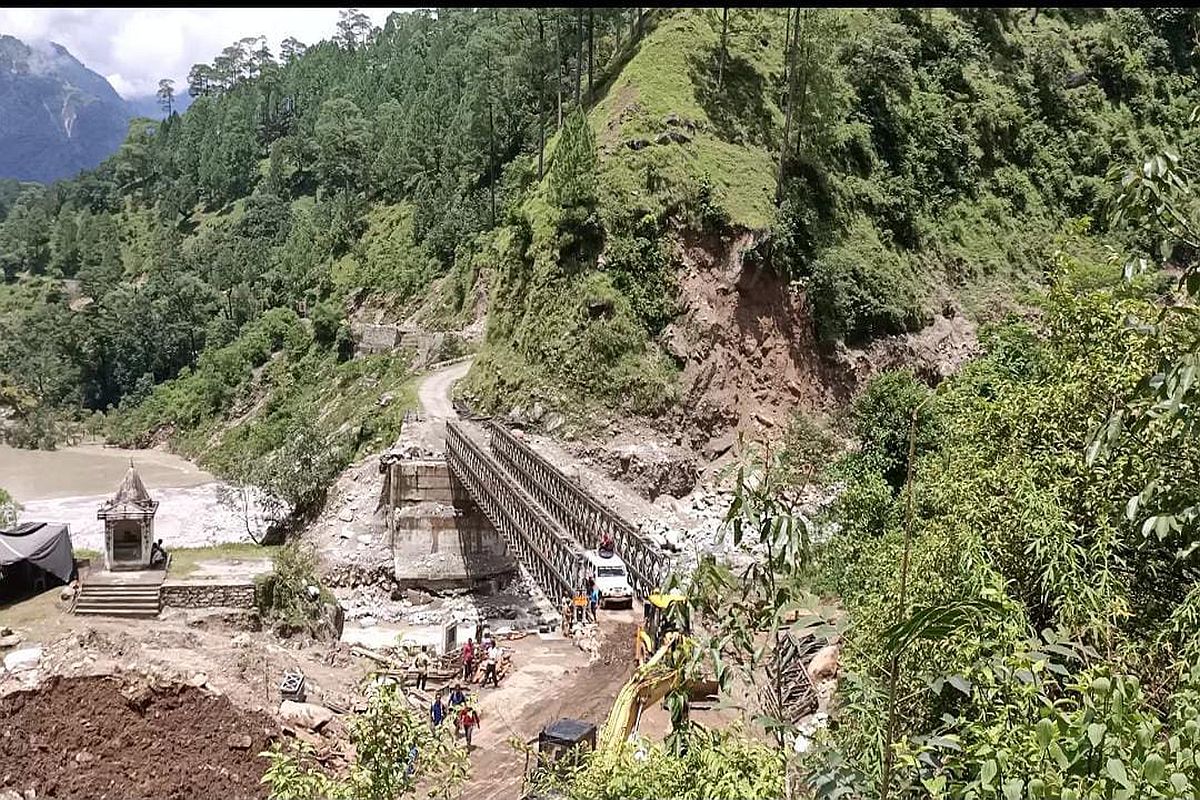Urvashi Rautela lauds PM Modi’s call to promote Uttarakhand as a destination for film shoots
Actress Urvashi Rautela reacted to Prime Minister Narendra Modi's statement regarding promoting Uttarakhand as a destination for film shooting.
Landslides blocked the Birahi Ganga river to form a lake. Gohna villager Gajendra Rawat says: “The boat was buried in the debris. A small portion was visible. On 15 August the villagers carried out a special operation and dug out an old boat from the flash flood debris.”

(Photo: PIB)
An old boat was recently recovered from a remote village in Uttarakhand, after five decades, by digging out flash flood debris.
The find has refreshed memories of the extinct Gohna lake, which was lost forever in 1970 flash floods in Chamoli district. Gohna village is now on spotlight after the recovery of the boat. Gohna, also known as Durmi lake, was one of the biggest lakes in the Garhwal and Kumoan region in the British era.
Advertisement
The history of the lake can be traced to 1893, when there was heavy rainfall in Garhwal Himalayas.
Advertisement
Landslides blocked the Birahi Ganga river to form a lake. Gohna villager Gajendra Rawat says: “The boat was buried in the debris. A small portion was visible. On 15 August the villagers carried out a special operation and dug out an old boat from the flash flood debris.”
British ICS officer HG Walton has described the Gohna lake in his famous book, British Garhwal (district gazetteer).
Published in 1910, the book compared it with other lakes of the Garhwal division with Gohna, Walton writes, “Until 1893 the latest lake was the Diuri Tal.” Narrating the Gohna lake the author adds: “That year, however, the Gohna or Durmi lake was formed and it is now by far the largest not only in the district but in the entire division.”
The 1970 flash floods created ripples in Garhwal Himalayas. The lake, created through a landslide and three times bigger than the Nainital lake, burst to flood downstream areas. The lake became part of history in 1970.
With the recovery of the boar a new interest has generated in the area. Journalist Mahanand Bisht says: “Recently when Uttarakhand chief minister Trivendra Rawat visited Chamoli local people requested him to revive the lake and make it a multipurpose lake.”
Immediately after the 1893 landslip, the Geological Survey of India conducted a survey of the over 2 mile-long and 1 mile wide lake. Many travel writers captured the beauty of the lakes in their writings which got published abroad in journals.
Advertisement